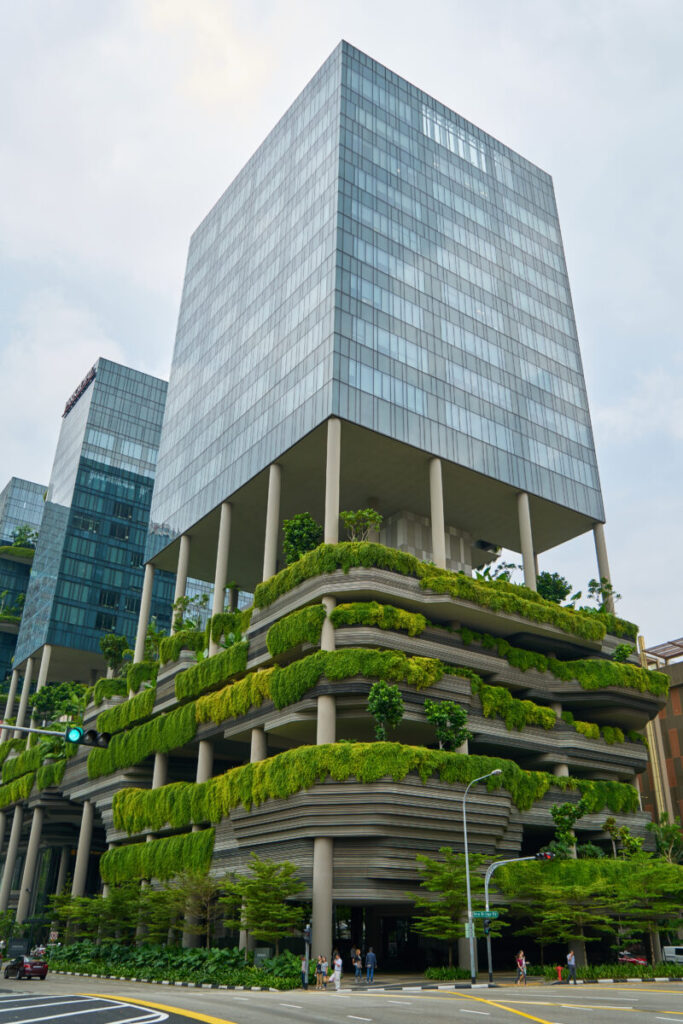Rethinking Constructions #1
Our special correspondent at COP29 returns for 22-med to outline the main points of the debates held there regarding the Mediterranean. Throughout December, the major issues and key outcomes of the 29th UN Climate Summit are analyzed, through three themes: biodiversity, building transition, and decarbonization.
The fight against climate change is intensifying. The discussions at COP29 in Baku have therefore spotlighted a sector often overlooked: the building sector. Responsible for nearly 40% of global greenhouse gas emissions, this sector presents both a colossal challenge and a unique opportunity to build a sustainable future. As urbanization progresses at a breakneck pace, the ecological transition of buildings appears to be a necessity. It is urgent to reconcile urban growth and climate resilience.
An Urgent Need to Transform the Sector
With an additional 2.4 billion urban dwellers expected in the next twenty years, cities face a real puzzle to solve. This is made even more complex as they currently account for 37% of emissions related to energy and industrial processes while being particularly vulnerable to the effects of warming. However, a striking fact emerges: half of the buildings that will exist in 2050 have not yet been constructed. This statistic highlights a crucial opportunity: integrating sustainable practices today could transform the sector into a driver of carbon neutrality.
Towards Biocities: Reconciling Humans and Nature
Inspired by European initiatives, the idea of biocities proposes a reconfiguration of urban spaces; here, humans coexist harmoniously with nature. These ecological cities rely on bio-sourced materials such as wood, which absorbs carbon dioxide instead of emitting it, unlike concrete and steel. However, this transition poses challenges, particularly sustainable forest management to avoid massive deforestation.
Meanwhile, other solutions such as green roofs, natural insulation, and urban forests help reduce heat islands, filter air, and improve the quality of life for residents. Conventional cities, with their omnipresent concrete, are thus transforming into resilient urban ecosystems capable of facing the effects of climate change.
Climate Financing: A Point of Tension
Yet, the ambition of biocities cannot be realized without substantial funding. In Baku, discussions intensified around mobilizing the necessary resources. With trillions of dollars at stake, disagreements persist over the source of these funds, whether through governments, multilateral banks, or the private sector. Anaclaudia Rossbach, director of UN-Habitat, emphasized the urgency of global cooperation to combine social, urban, and climate objectives on a solid economic basis.
An Equitable and Inclusive Transition
Beyond financing, the ecological transition of the building sector offers a unique opportunity to enhance equity. The construction sector, which already represents 11 to 13% of global GDP, is a treasure trove of green jobs. According to GlobalABC, every million dollars invested in efficient renovations or constructions generates 9 to 30 jobs. Investing in sustainable buildings thus not only reduces emissions but also creates large-scale economic and social opportunities.
Building Today for Tomorrow
To align urbanization and carbon neutrality, several concrete measures are necessary:
1. Adopt mandatory energy codes for all buildings, both new and existing.
2. Accelerate investments in energy efficiency, starting with public buildings.
3. Value local and sustainable techniques, tailored to the climatic specifics of each region.
COP29 marks a turning point for the building sector, which must evolve from a heavy emitter to a major lever of ecological transition. The tools exist: it remains to unite political will and funding to turn this vision into reality.

Featured photo: Reconciling urban growth and climate resilience ©Freepik
